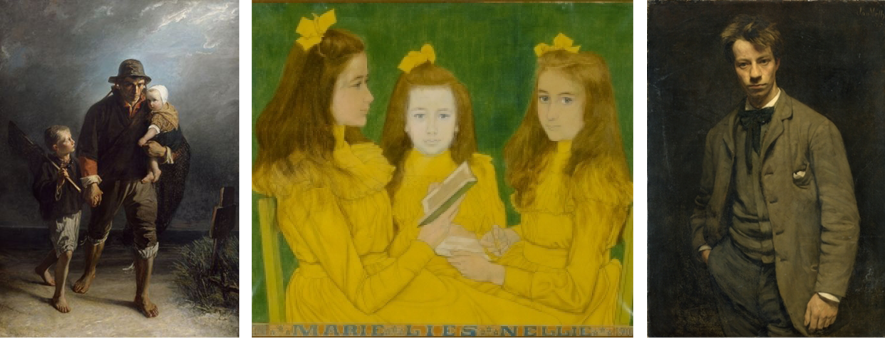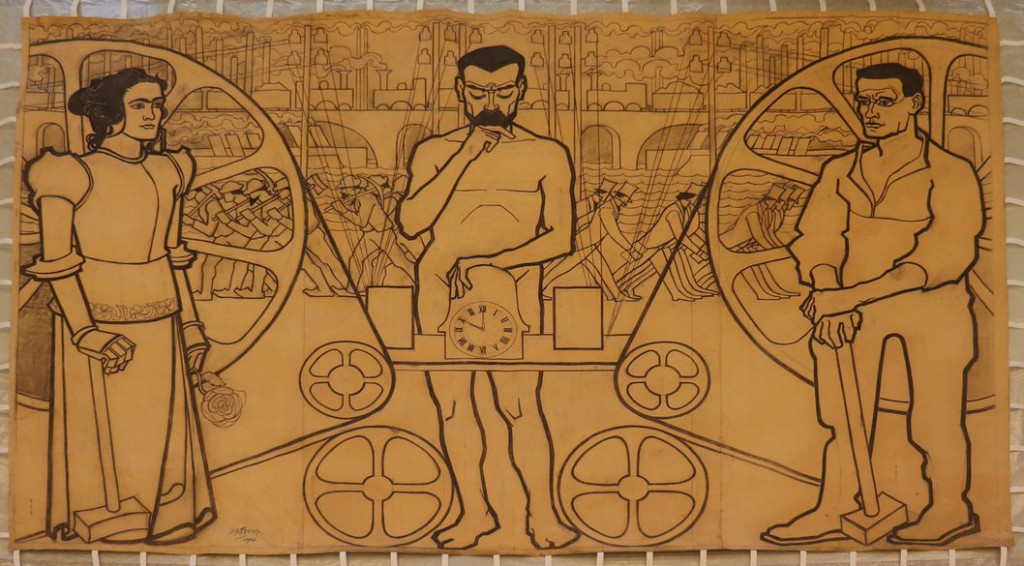MODERN
Van Gogh, Rietveld, Léger and others
News — Apr 14, 2023

Modern. The word means different things to different people. But how did the concept of modern in the arts originate and develop? The Stedelijk presents MODERN — Van Gogh, Rietveld, Léger and others; 200 artists who were innovative in their time and helped lay the foundations for what we now know as modern. With over 300 works from as many as 20 movements, from realism and impressionism to Dada, from Arts and Crafts and Art Nouveau to Bauhaus and De Stijl. The exhibition takes a fresh look at internationally known names and highlights many lesser-known makers.
MODERN is also a showcase of public favorites, with works by Emile Gallé, Vincent van Gogh, Josef Hoffmann, Fernand Léger, Piet Mondrian, Claude Monet, William Morris, Charlotte Perriand, Gerrit Rietveld, Thonet, and Tiffany, among others, as well as works that have not been seen for a long time, by George Hendrik Breitner, Odilon Redon, and Jan Toorop, among others. New acquisitions by Christopher Dresser, Marcel Breuer, and Hannah Höch will even be shown for the first time.
Rein Wolfs, director of the Stedelijk Museum Amsterdam: "The Stedelijk always looks at modernism with fresh eyes and is also intrigued by how makers showed their engagement with social issues. MODERN shows that twentieth-century modernism, with its geometric and abstract forms, did not emerge overnight, but was the outgrowth of enormous changes that had begun in the nineteenth century. The Stedelijk has an important collection of nineteenth-century art and design, which deserves to be given a proper platform in the light of twentieth-century developments.”

The nineteenth century: A turning point
The nineteenth and early twentieth centuries: a time of industrialization, steam engines and ocean liners, of science and photography, advertising, and a flourishing nightlife. Citizens start buying art and want to identify with their own era. There is less need for history pieces and biblical tales, people want to see relatable subjects from everyday life, and preferably a glimpse of the future. The same applies to design: new materials and techniques are in tune with their own times.

Innovation in design
In the world of design, resistance to the many cheap, copied neo-styles emerges in the mid-nineteenth century – designers of the English Arts and Crafts movement and Art Nouveau, therefore, revert to traditional craftsmanship. On the other hand, designers actually embraced modern techniques and new materials, such as steel, cast iron, and pressed glass. Sometimes modern-looking design has surprising origins. For instance, Christopher Dresser’s simple-looking geometric designs were heavily influenced by his trip to Japan in 1876. And research shows that the famous modern tubular steel furniture by Mart Stam and Marcel Breuer from the 1920s had early precursors, as evidenced by an 1840/50 tubular metal rocking chair, a special loan from the Victoria and Albert Museum. Such examples will have been an inspiration for designs such as Thonet’s famous rocking chair, made of bentwood (a then relatively new technique). Representations of the modern age are also incorporated into products: Peter Muller Munk’s streamline-style Normandie water pitcher echoes the bow of the steamship of the same name, and the American Rocket radio refers to a rocket.

Innovation in art
In art, the new subjects are to be found close to home; Vincent van Gogh captures how a Parisian suburb is swallowed up by the encroaching city, George Hendrik Breitner paints contemporary Amsterdam, Jan Veth captures his contemporaries in incisive portraits. These are now fairly familiar images, but in their directness and choice of subject matter, they were certainly a break from the earlier ones. Women are also innovative: Suzanne Valadon rejects prevailing norms to depict female nudes that defy traditional notions of beauty. Photographer Germaine Krull publishes a book on steel, until then a subject reserved for men, while Margaret Bourke-White is one of the first foreign photographers to depict the industrialization of the newly created Soviet Union. The new freedoms in art continue to unfold: the compositional lines of Jan Hendrik Weissenbruch would later be followed by the further abstractions of Piet Mondrian and Theo van Doesburg. Critique of modernity is also featured: works by W.E.B. Du Bois, the Dadaists, Gerd Arntz, Wifredo Lam, and Roberto Matta display artistic protests against the colonialist aspects of modernism.


For everyone
Many artists envision a better world and focus on creating art that reflects modern life, that everyone can see. One of the highlights of the exhibition is Jan Toorop’s monumental preliminary studies for a ceramic triptych that can still be found in the Beurs van Berlage (Berlage’s building for the Stock Exchange in Amsterdam). They portray a utopian view of the history of Dutch commerce from a socialist perspective, ironically right in the bastion of commerce. Likewise, designers want their work to contribute to an ideal society. De Stijl and Bauhaus introduced sober, functional design, stripped of ornamentation, and aimed at creating a new, universal society for everyone. However, the most successful art that served a social function originated outside Europe and North America: the exhibition features ceremonial objects such as a mosque tapestry from Iran, bark cloths from Fiji and New Guinea, a Kuba rug from Congo, and garments worn by the Maroon communities of Surinam.

Color on the wall
In 1938, the galleries of the Stedelijk, dating from 1895, also leap into the modern when Willem Sandberg has some of the original colored walls of the museum painted white. After the war, the rest of the museum follows. It is a trend in the museum world that leads to the ‘white cube’ in the 1950s: white spaces with nothing to distract from the aesthetic. Some galleries in this exhibition have been repainted in their original colors, and the act of repainting is also explored. Today, museums are re-emerging from the ‘white cube’ and using color on the walls to add atmosphere and context to the works.
Publication
The exhibition will be accompanied by a publication of the same name, including in-depth texts by the exhibition’s curators, Ingeborg de Roode, curator of industrial design at the Stedelijk, and Maurice Rummens, academic researcher at the Stedelijk, an essay by Bas Heijne on Jan Toorop’s triptych and an interview with Rolando Vázquez Melken on European modernism viewed from a global and decolonial perspective.
Meet the Masters
The monthly program Meet the Masters showcases makers from many different perspectives. On Saturday afternoon, 2 September, it will focus entirely on the exhibition MODERN. The program will be announced later.
NOTE TO EDITORS
For more information and images, please contact the Press Office of the Stedelijk Museum, pressoffice@stedelijk.nl.
Save the date: the press preview for this exhibition will take place on Wednesday 17 May, from 10 am to 1 pm. An invitation will be sent.
The exhibition MODERN — Van Gogh, Rietveld, Léger and others was made possible in part thanks to the generous contribution of the Blockbusterfund.

